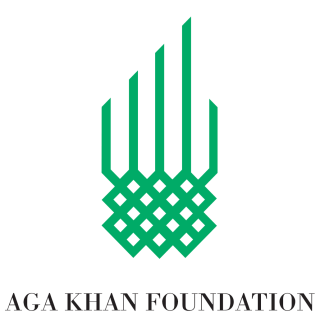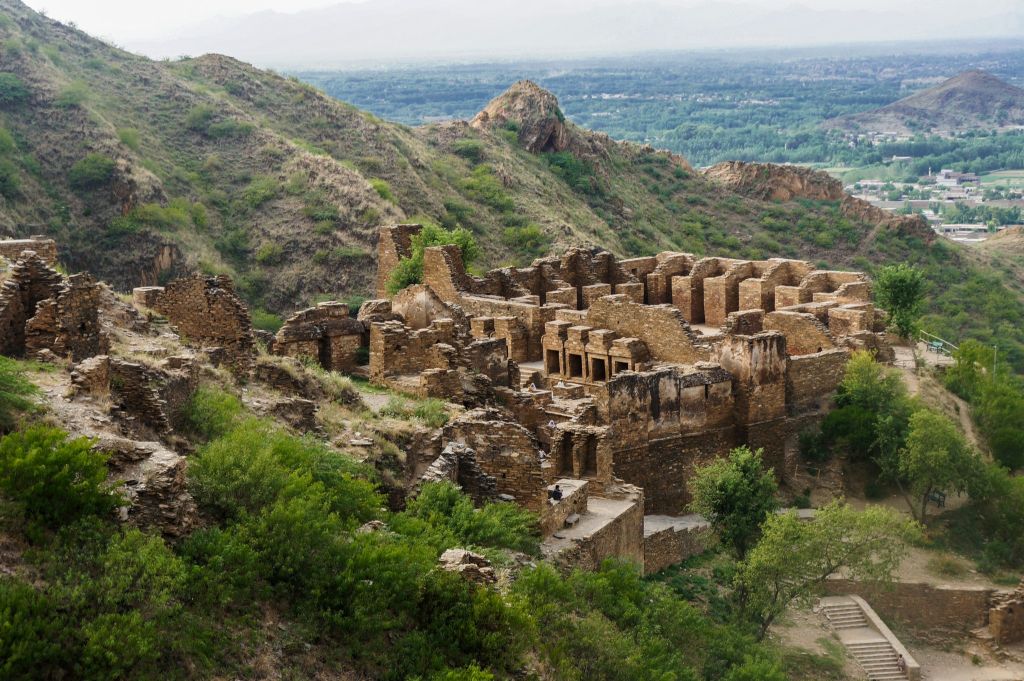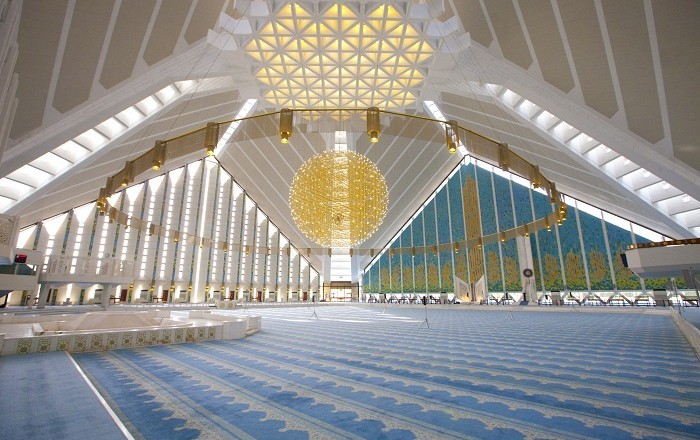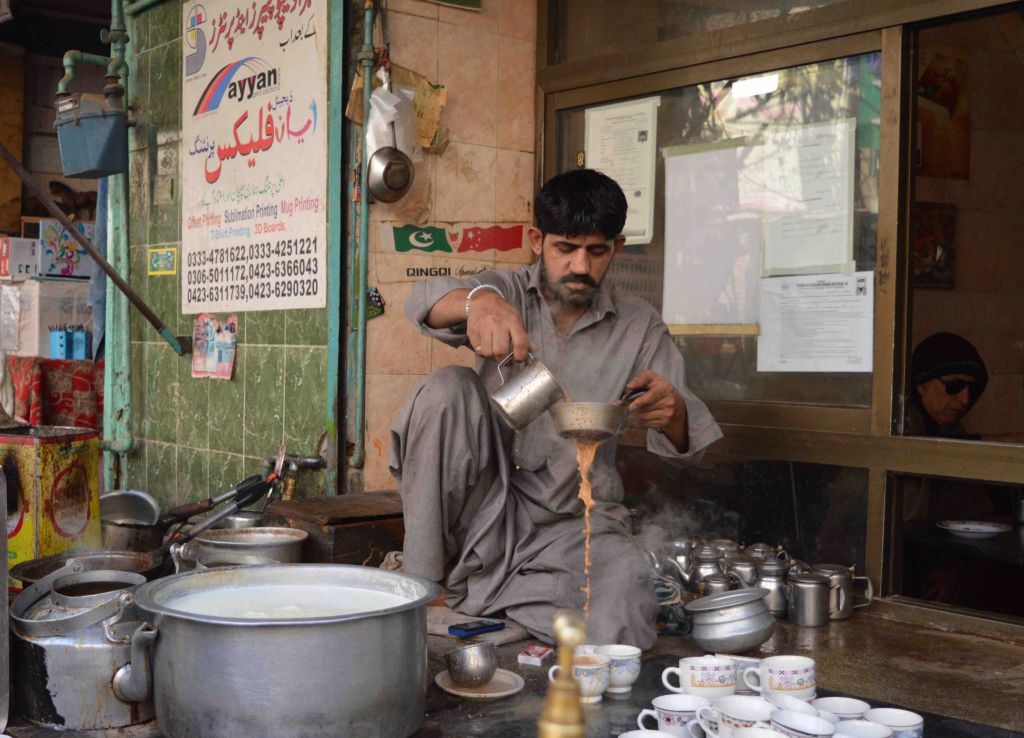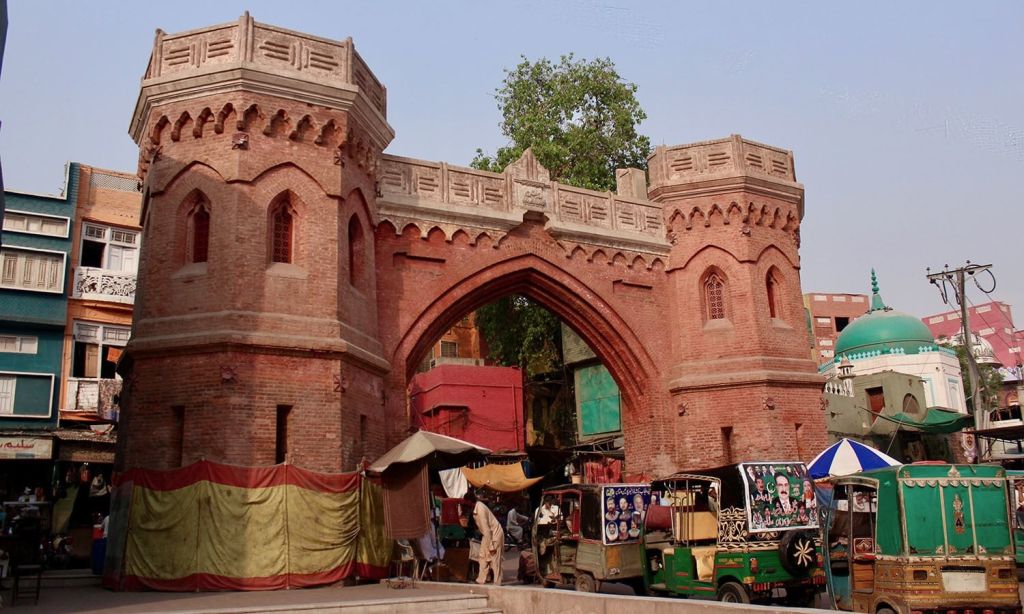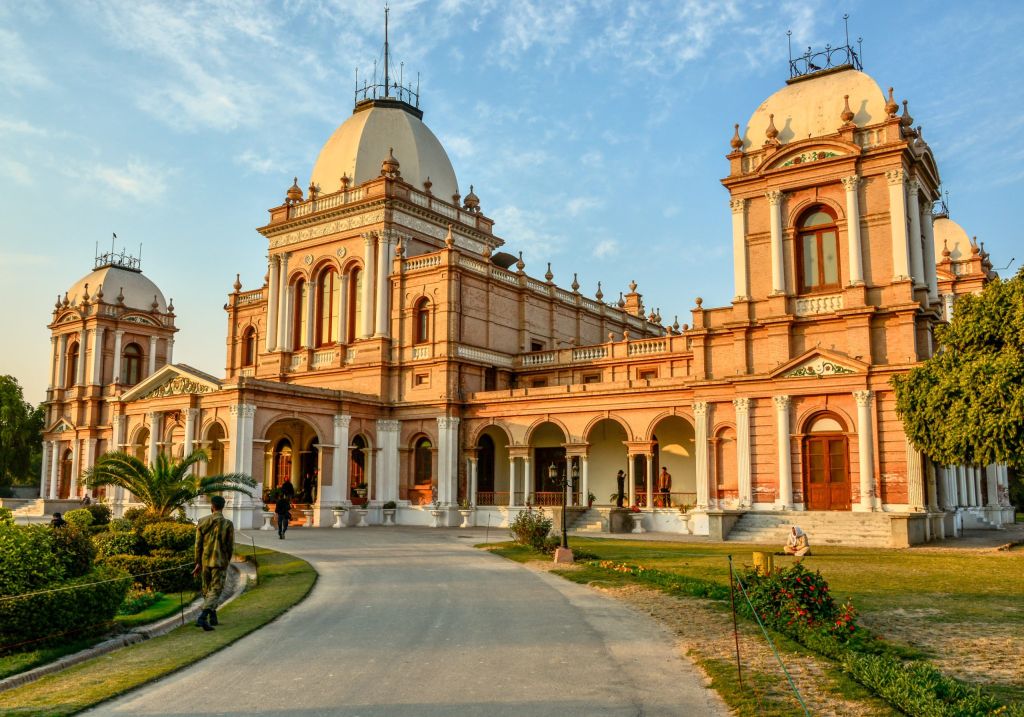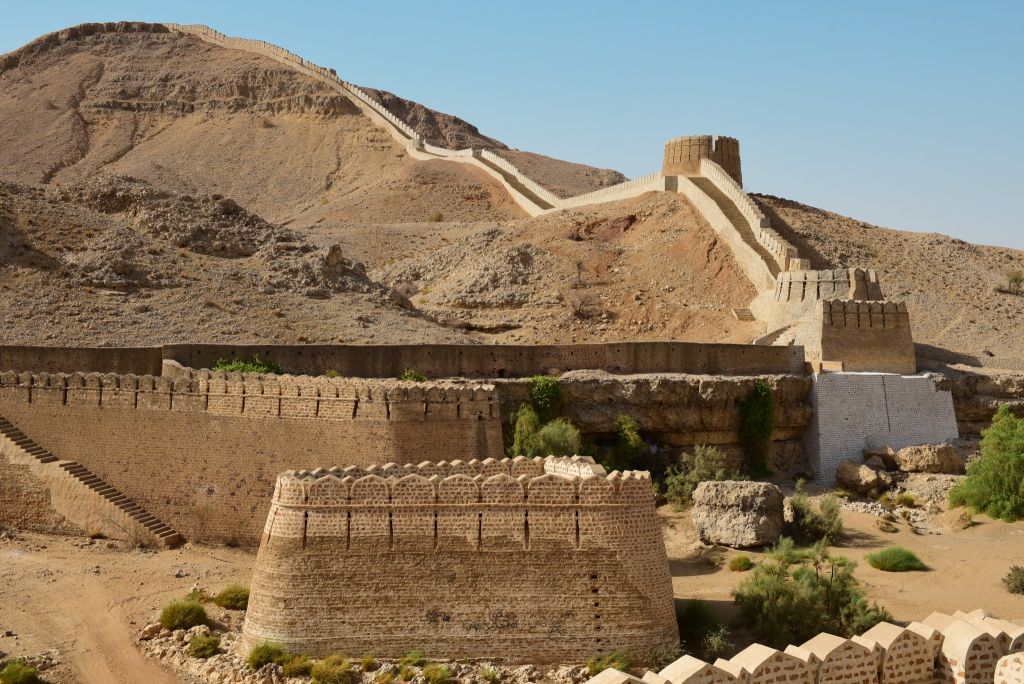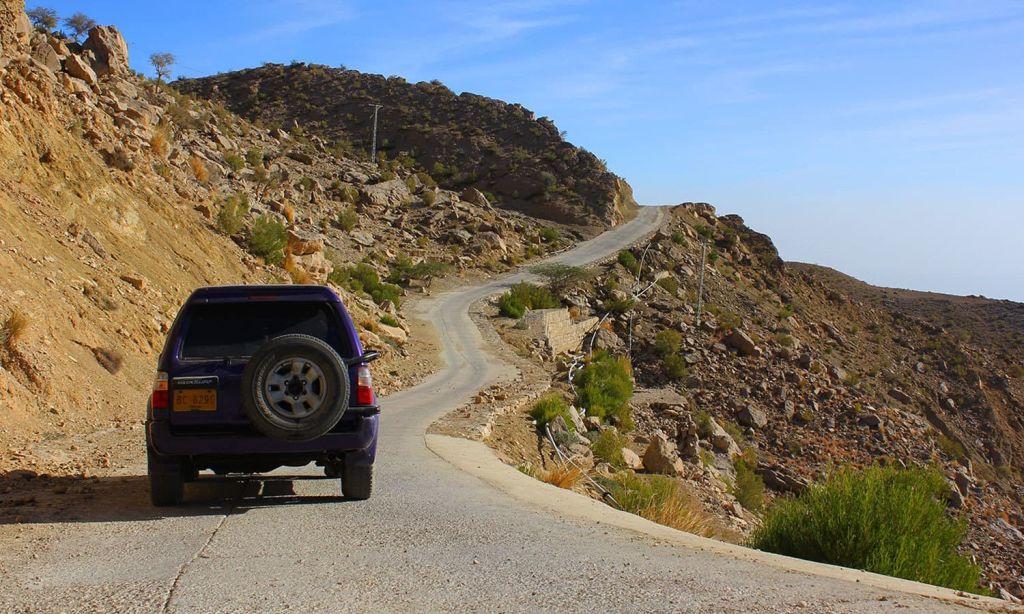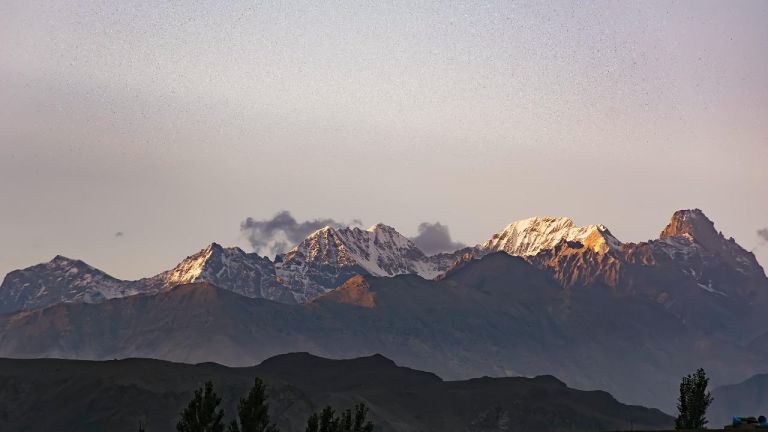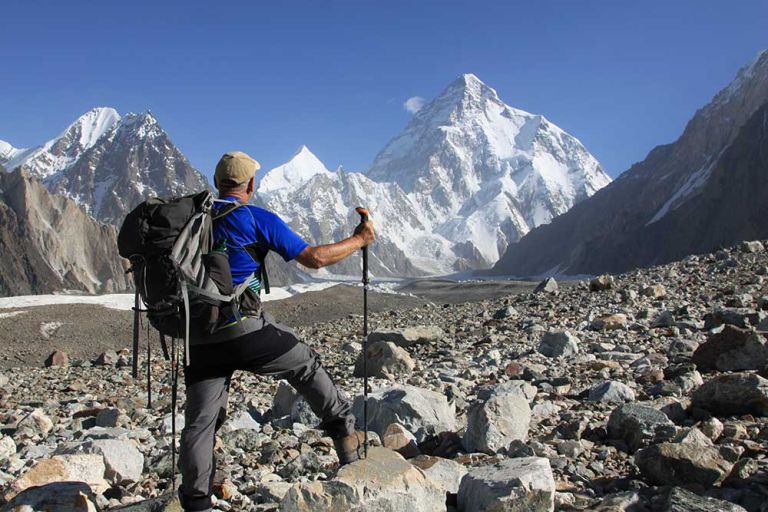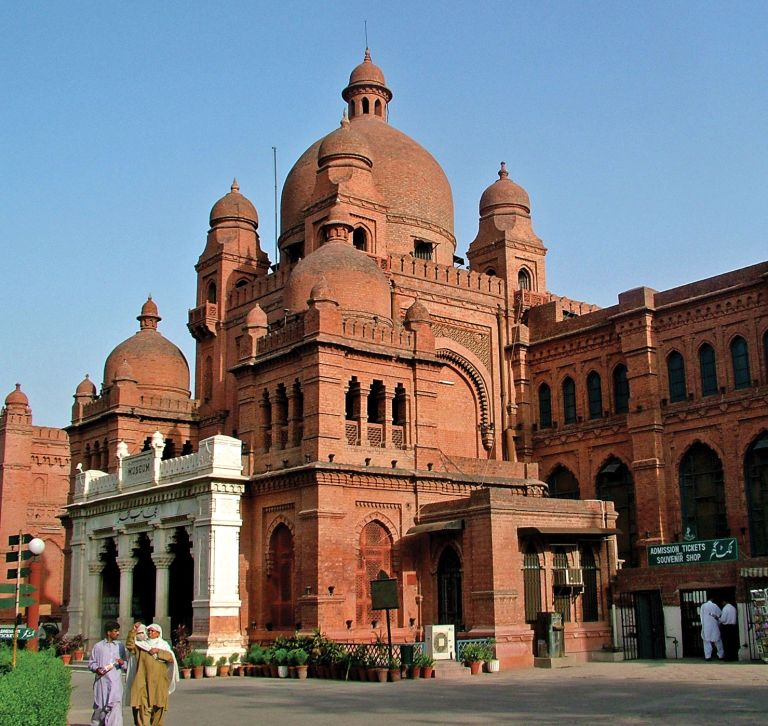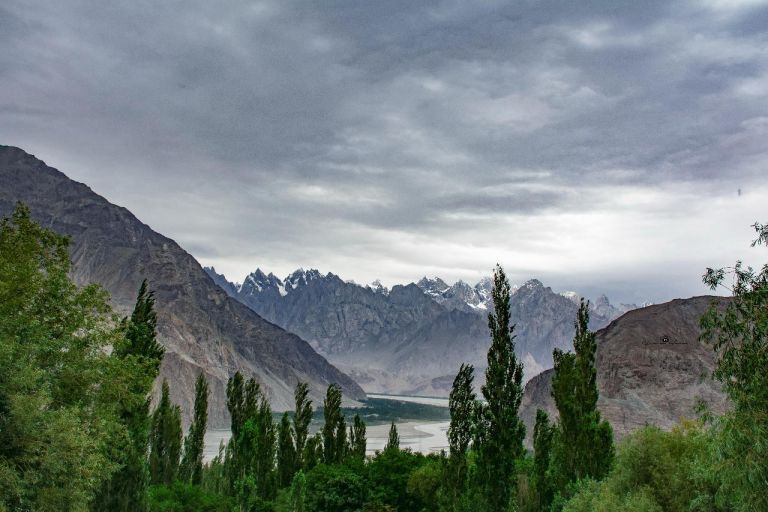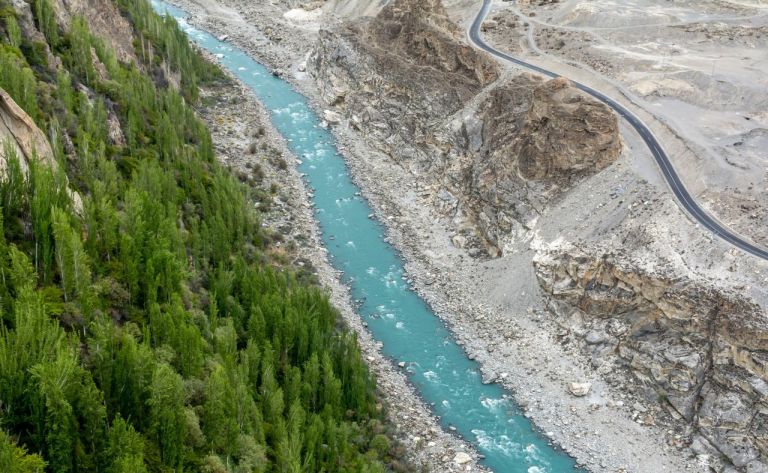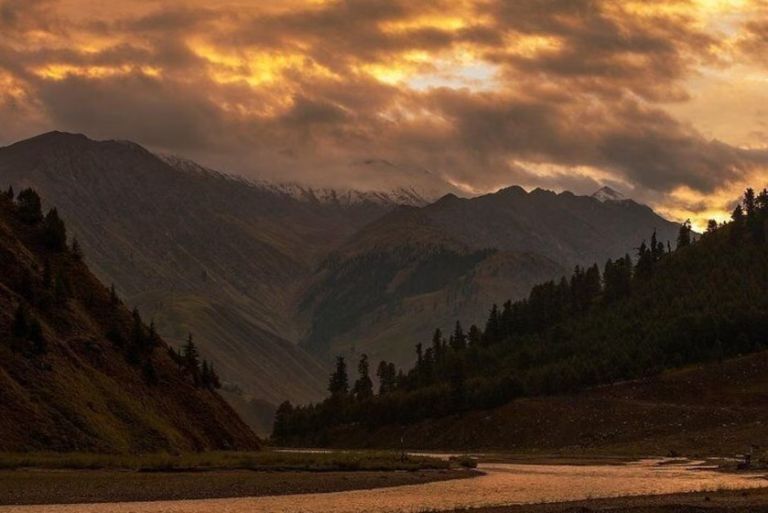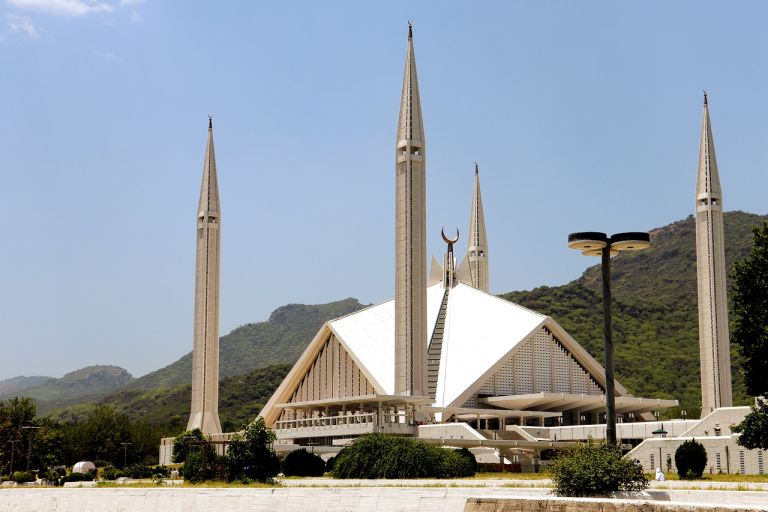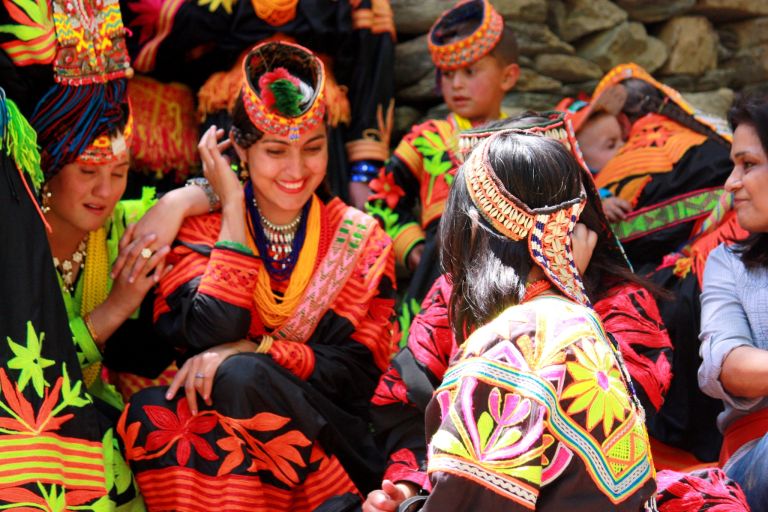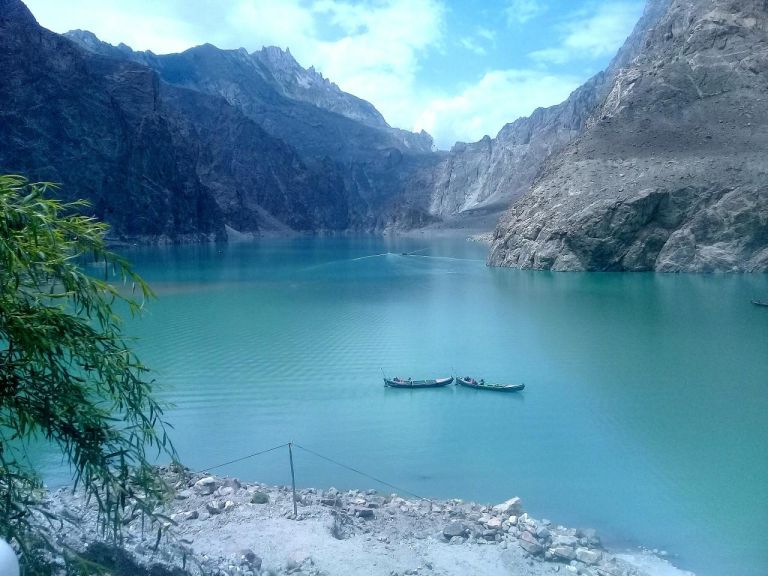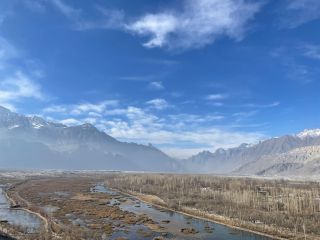*** Trips to Balochistan and most of Sindh are best done between November and March. From April to September it is too hot, especially in the desert areas.
*** Know that itineraries can always change, we try to do our best to see as much as possible.
*** For this trip you need a special permit for the national park, to be arranged two weeks before!
Meaning: you need to book this tour at least two weeks before to get the permit!!
On this two week adventure we will explore the area between Islamabad and Lahore to finally go all the way south to Karachi near the coast.
Day 1 arrival Islamabad
Upon arrival in Islamabad, you will be met by our guide. Together with Rawalpindi, Islamabad forms a twin city, with Islamabad being the modern city of diplomats and officials. Rawalpindi is a bulging city with busy bazaars and traffic circles. Islamabad is slightly higher and therefore slightly cooler than Rawalpindi. You will have time to stroll through the bazaars of Rawalpindi. The imposing, modern Faisal Mosque is one of the largest mosques in the world, with space for 15,000 worshipers in the mosque and 85,000 in the courtyard. Those interested can visit Daman-e Koh park with a nice view, the Pakistan monument, and the Lok Virsa Heritage Museum.
Day 2 Islamabad, Taxila and Takht-i Bahi
We will start our day with an excursion to Taxila, a vast archaeological complex and ancient capital of the Gandhara Empire. This Buddhist empire is one of the most important historical periods of Central Asia. Here you can visit the museum, an old monastery and the excavations of the ancient city of Sirkup. We will also visit the excavations of the Buddhist monastery at Takht-i Bahi. This monastery also dates from the Gandhara period. It was the monastery of Kanishka, one of the most important princes of the Kushan Empire who ruled Gandhara in the 2nd century BC.
We’ll spend the night in Islamabad.
Day 3 Islamabad - Lahore
We’ll drive along the legendary Grand Trunk road to Lahore, one of the most beautiful cities in Pakistan. On the way we will visit Katas Raj and Hiran Minar. At Hiran Minar you will be introduced to the splendor of the Moghul Empire for the first time. This complex was built as a country retreat for hunting by Emperor Jahangir. Literally it means 'the deer tower'.
Day 4 Lahore
Lahore is the second largest city in Pakistan. For centuries it was one of the most important cities of the Indian Mughal Empire. In the morning we will start with a tour in Lahore. One of the highlights of our tour is the Badshahi Mosque, one of the most famous in the world and built in 1674 by Aurangzeb, the Mughal emperor. The mosque can accommodate about 40,000 people to worship in a single prayer session and consists entirely of red sandstone. Also on our list is Shalimar Garden, which was built in 1641 by Shah Jahan, the great Mughal emperor. This 80 hectare beautiful garden is a great example of the famous architectural skills of the Mughal Empire. We will also pay a visit to the Lahore Museum, built in the 18th century, with artifacts from the time of the civilization of Mohenjo-daro and Harappa to the present day. It has about 20 galleries that display various priceless Qurans, paintings, Gandharan sculptures, carpets, manuscripts, Islamic artworks and many other such artifacts. We’ll also pass along the Minar-e-Pakistan, a monument known as a perfect representation of Pakistan's ideology. This monument is located in Lahore's famous Iqbal Park, one of the largest urban parks in the country. Built in the 1960s, it has a special patriotic sentiment for the country. This is where the Lahore Resolution was passed by the All-India Muslim League on March 23, 1940.
Day 5 Lahore
Today we’ll have another day to explore Lahore. We will visit the Tomb of Jahangir, a 17th century mausoleum built for the Mughal emperor Jahangir. Dating back to 1637, the mausoleum is located in Shahdara Bagh in Lahore, Punjab, Pakistan, along the banks of the Ravi River. The site is famous for its interiors which are elaborately decorated with frescoes and marble, and its exterior which is richly decorated with pietra dura. The tomb, along with the adjacent Akbari Sarai and Asif Khan's tomb, are part of an ensemble that is currently on the Tentative List of UNESCO World Heritage Sites.
Also on our list today is the Tomb of Nur Jahan, a 17th-century mausoleum, which was built for the Moghul Empress Nur Jahan. The marble of the tomb was looted during Sikh times in the 18th century for use at the Golden Temple in Amritsar. The red sandstone mausoleum, along with the nearby tomb of Jahangir, the tomb of Asif Khan and Akbari Sarai, is part of an ensemble of Mughal monuments in Lahore's Shahdara Bagh.
The Vazir-Khan Mosque is a 17th century mosque in the city of Lahore, the capital of the Pakistani province of Punjab. The mosque was inaugurated during the reign of the Mughal emperor Shah Jahan as part of an ensemble of buildings that also included the nearby Shahi Hammam baths. Construction of the Wazir Khan Mosque began in 1634 C.E. and was completed in 1641. It is considered as the most ornately decorated mosque of the Mughal era.
Today you’ll have a free evening in Lahore.
Day 6 Lahore - Multan via Harappa
The next few days you will drive south. You follow the Indus and drive through Sindh province, the largest province in the country. First, visit the legendary city of Harappa, one of the most important settlements of the Indus Valley Civilization, dating back to about 2500 BC.
Then drive to Multan, the first city to visit Sufi shrines. Along the way you will encounter more Sufi shrines. These places of mystics are still very popular with the population. There is a good chance that qawwali music and dance will take place, where people can get completely into a trance.
Day 7 Multan - Bahawalpur
Multan is the birthplace of Fariduddin Ganjshakar (popularly known as "Baba Farid''), recognized as the first great poet of the Punjabi language. Multan is located in a bend created by five rivers in central Pakistan. The Sutlej River separates it from Bahawalpur and the Chenab River from Muzaffargarh. The city is one of the oldest cities in the world, 6000 years old, and has become an influential political and economic center for the country, with a dry port and excellent transport links. Multan is famous for its crops: wheat, cotton and sugarcane, mangoes, citrus fruits, guavas and pomegranates.
Hazrat Pir Shah Shamsuddin Sabzwari Multani was a Muslim Sufi missionary and Pir from Sabzawar in present day Iran. Shamsuddin Sabzwari arrived in Multan in early 1200C.E. He established a dargah and preached Islam to the local people. Shamsuddin Sabzwari is considered a saint for his poetry and local traditions. He died in 1276 and his mausoleum is in Multan. The mausoleum was built by one of his grandsons, Sadr al-Din. The structure that exists today is considered an influential example of the Multani style of architecture.
The Shrine of Bahauddin Zakariya is a 13th-century shrine in the center of Multan, immediately north of the old walled city. The shrine stands next to the remains of the ancient Hindu Prahladpuri Temple. The tomb is dedicated to the Islamic mystic Bahauddin Zakariya, the founder of the Suhrawardiyya order of Sufism. It is considered one of the most important shrines in the southern Punjab province and is the prototype of Multan's distinct architectural style. Bahauddin's mausoleum, which was built in 1268 after his death, is spread over an area of 15.77 square meters.
However, the area outside the main shrine building has expanded to hundreds of meters. The sanctuary is a square shaped structure with an octagon above the plaza. The octagon occupies half the area of the square. Above the octagon is the Muslim religious hemisphere. The Tomb of Shah Rukn-e-Alam is the mausoleum of the Sufi saint Sheikh Rukn-ud-Din Abul Fateh. The shrine is considered the earliest example of Tughlaq architecture and is one of the most impressive shrines of the Indian subcontinent. The shrine attracts more than 100,000 pilgrims to the annual urs festival that commemorates his death.
Day 8 Bahawalpur - Rahim Yar Khan
Today we’ll visit the Derawar Fort, one of the most imposing forts in the country. The Derawar Fort was first built in the 9th century AD by Rai Jajja Bhatti, a Hindu ruler of the Bhatti clan, as a tribute to Rawal Deoraj Bhati the king of Jaisalmer and Bahawalpur. It is a large square fort in Ahmadpur East Tehsil, Punjab, Pakistan. About 130 km south of the city of Bahawalpur, the forty bastions of Derawar are visible for many kilometers in the Cholistan desert. The walls have a circumference of 1500 meters and are up to thirty meters high. In the 18th century the fort was taken over by the Muslim Nawabs of Bahawalpur from the Shahotra tribe. It was later rebuilt in its present form in 1732 by the Abbasi ruler Nawab Sadeq Muhammad, but in 1747 the fort slipped from their hands as a result of Bahawal Khan's pursuits in Shikarpur. Nawab Mubarak Khan took possession of the fort in 1804.
The drive then takes us to Uch Sharif, a historic city in the south of Pakistan's Punjab province. Uch may have been founded as Alexandra on the Indus, a city founded by Alexander the Great during his invasion of the Indus Valley. Uch was an early stronghold of the Delhi Sultanate during the Muslim conquest of the subcontinent and a regional metropolitan center between the 12th and 17th centuries.
Finally, we will continue to Rahim Yar Khan, where we will spend the night.
Day 9 Rahim Yar Khan - Larkana
After breakfast we will continue our way to the historic city of Larkana. Larkana is a city in the northwest of Pakistan's Sindh province, where the historic Indus River flows to the south of the city. It is home to the Indus Valley Civilization site Mohenjo-daro.
Day 10 Larkana - Sehwan via Moehendjaro
Larkana, the fourth largest city of the province, Sindh, is known as "Eden of Sindh". The city has great historical significance and is closely associated with some of Pakistan's famous political personalities. The surrounding areas of Larkana include the city of Shikarpur, Sukkur, the Ghar Canal and many archaeological sites such as Mohenjo-Daro.
Mohenjo-Daro was a city in southern modern Pakistan in Sindh province, on the right bank of the Indus River. It was built between four and five thousand years ago and lasted until 3700 BP. It was part of the Harappan civilization and at its peak the city had at least 35,000 inhabitants. This was a sophisticated society with an extensive diet consisting of meat from both wild and domestic animals and a variety of cultivated wheat, barley, peas and lentils - a huge step forward in the human progression of the nomadic hunter-gatherers.
The Kot Diji Fort, formerly known as Fort Ahmedabad, dominates the town of Kot Diji in Khairpur District, east of the Indus River and on the edge of the Nara-Rajasthan desert. The fort was built between 1785 and 1795 by Mir Sohrab Khan Talpur, the founder of the Kingdom of Upper Sindh in 1783. In addition to the fort, a 5 kilometer long thick mud wall was built around the city. This defensive wall had bastions running its length and a huge iron gate served as the only entrance to the city. The fort was considered invincible and served as the residence of the Emirs of Khairpur in times of peace. So it is the ancestral home of the royal family. During the wartime, the zenana (female members of the royal family) would be moved to the Shahgarh Fort, formerly within the empire, but since 1843, after conquering the rest of the Sindh, it lies in the Tharand Jaisalmer desert, now in india. When the Zenana settled in the comfort of palaces, it stood mainly as a decorated reminder of violent times. However, throughout its history, Fort Kot Diji has never been attacked. Kot Diji lay on the edge of the desert; this provided an advantage over enemies marching from the east, as a depleted army could be met before it could take supplies and water from the irrigated land. In fact, the Mirwah Canal was built in 1790 specifically to irrigate the land west of the fort and bring water to the military base.
Day 11 Sehwan - Ranikot
On the way to Hyderabad we’ll have a stop at the Ranikot Fort. This is one of the largest fortresses in the world and is also known as the wall of Sindh. Ranikot Fort (also known as Rannikot) is a historic Talpur fort near Sann and known as the Great Wall of Sindh, Ranikot Fort is believed to be the world's largest fortress, with a circumference of about 32 kilometers. The ramparts of the fortress have been compared to the Great Wall of China. The site was nominated by the Pakistan National Commission for UNESCO World Heritage status in 1993 and has been on the tentative list of UNESCO World Heritage Sites ever since. The fort is listed as a Historic Monument under the Antiquity Act, 1975 and subsequent amendments, and is protected.
We will also visit Hazrat Usman marwandi, popularly known as Lal Shahbaz Qalandar, a scholar, Sufi saint and religious poet of present-day Pakistan and Afghanistan. He is revered and respected by both Muslims and Hindus in the region for preaching religious tolerance between the religions. Overnight near Ranikot Fort.
Day 12 Ranikot Fort - Karachi via Thatta
We continue our journey through the Sindh province to the largest city in Pakistan. On the way you will visit the shah jahan mosque in Thatta, dating from the Mughal period. We will have a stop at Makli hill, one of the largest cemeteries in the world.
Thatta was the medieval capital of Sindh, and served as the seat of power for three successive dynasties. Thatta's historical significance has yielded several monuments in and around the city. A UNESCO World Heritage Site, Thatta's Makli Necropolis is the site of one of the world's largest cemeteries and has numerous monumental tombs built between the 14th and 18th centuries in a syncretic burial style typical of lower Sindh. The city's 17th century Shah Jahan Mosque is richly decorated with decorative tiles, and is considered the most elaborate display of tile work in South Asia.
In Thatta, we will visit the Makli Necropolis, one of the largest burial sites in the world, spread over an area of 10 kilometers near the city of Thatta, in Pakistan's Sindh province. The site is home to approximately 500,000 to 1 million tombs built over a 400-year period. In Makli Necropolis are several large tombs of monarchs, various Sufi saints and esteemed scholars. The site was inscribed as a UNESCO World Heritage Site in 1981 as an "excellent testament" to the Sindhi civilization between the 14th and 18th centuries.
If you want, we can make a stop at Keenjhar Lake. It provides a favorable habitat for winter migratory birds such as ducks, geese, flamingos, cormorants, waders, herons, egrets, terns, coots and gulls. It is a breeding area for the rare black-crowned night heron.
Overnight in Karachi.
Day 13 Karachi
Today we’ll have a full day to visit Pakistan's largest and most hectic city. About 20 million people live here in what was once the capital of Pakistan. We will visit the Mohatta Palace where art, architecture and culture come into play in this 20th century palace that was built in 1925 by a Hindu prince. Today it is used as an art gallery and museum, and high-profile exhibitions are always held in this grand building, surrounded by trees and Renaissance-style statues. The Rajasthani-style design of this building is a sight to behold.
The Quaid-e-Azam House Museum is about the founder of the nation, the personal history and life of Quaid-e-Azam, entirely in line with the history of the country itself. We’ll visit this museum and admire the colonial building and peaceful gardens which surround it.
We can also have a visit to the PAF Museum. If you like airplanes and all things aviation then the Pakistan Air Force Museum is a must. It is home to many aircraft such as planes and jets and radars and weapons that have been used by the Pakistan Air Force over the years, most notably during the war with India in 1965. Nearby there are also scale models from the First and Second World War II and some modern aircraft to see.
The Chaukhandi Tombs, an ancient cemetery and UNESCO World Heritage Site that houses the tombs of the ancestors of a local tribe. The intricate branding of these tombs is the most eye-catching feature with carvings and designs typical of the region, Sindh. The origin of this necropolis is estimated between the 15th and 18th centuries.
Overnight in Karachi
Day 14: Departure
End of service. We can assist you to the airport for your next journey!
Includes:
- Transport
- Professional local guide
- Accommodation
- Entrance fees
Doesn’t include:
- Meals and drinks
Price:
1 person: 5990 usd
2 persons: 3180 usd per person
3 persons: 2999 usd per person
4 persons: 2290 usd per person
**Single supplement: 1480 usd

